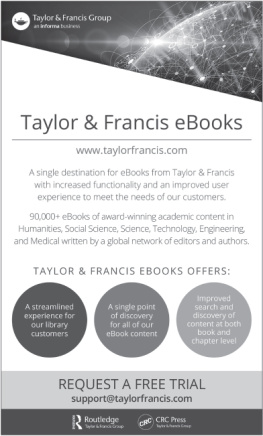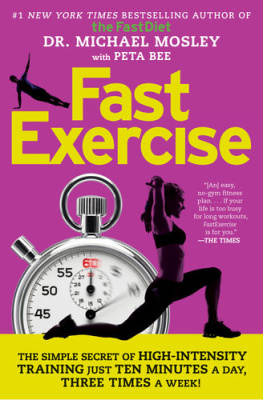A CROWN OF THORNS
Surgeons Ishrat Syed and Kalpana Swaminathan write together as Kalpish Ratna. Their book The Secret Life of Zika Virus (2017) examined the emergence of Congenital Zika Syndrome. Their newest book is Synapse (2019).


First published by Context, an imprint of Westland Publications Private Limited, in 2020
1st Floor, A Block, East Wing, Plot No. 40, SP Infocity, Dr MGR Salai, Perungudi, Kandanchavadi, Chennai 600096
Westland, the Westland logo, Context and the Context logo are trademarks of Westland Publications Private Limited, or its affiliates.
Copyright Ishrat Syed & Kalpana Swaminathan, 2020
ISBN: 9789389648423
The views and opinions expressed in this work are the authors own and the facts are as reported by them, and the publisher is in no way liable for the same.
All rights reserved
No part of this book may be reproduced, or stored in a retrieval system, or transmitted in any form or by any means, electronic, mechanical, photocopying, recording, or otherwise, without express written permission of the publisher.
Contents
What is your substance, whereof are you made,
That millions of strange shadows on you tend?
William Shakespeare, Sonnet 53,
The Quarto of 1609
hic incipit pestis
John Bretchgirdle, vicar of the Holy Trinity Church,
Stratford-upon-Avon, recorded the death of a weaver,
Oliver Gunn, on 11 July 1564 in his parish register.
Here begins the plague is scribbled in Latin next
to the burial entry. This parish register also records
the baptism of Gulielmus filius Johannes
Shakspere on 26 April 1564
All I have is a voice
To undo the folded lie
W.H. Auden, September 1, 1939,
from Another Time, 1940
Why this book? In the deluge of information about COVID-19 swamping the planet, why would anyone want more?
This plethora is the very reason.
Standing apart from that stampede, this pandemic looks differentand Id like to share my view. Ive been staring at it for a while now. For twenty years, give or take a few, Ive looked at epidemics across time.
It began quite by accident.
A doctors life follows a familiar trajectory. The first five years go in consolidating what youve learnt into what you do. The next ten, over in a blink, are spent in enjoying what you do. That ends in either smugness or resentment. I chose the second. Doing the same things over and over again was irritating, and I had begun to question the tenets of my craft.
By the beginning of this new millennium, the antibiotic era was long over. Puzzled by any number of new diseases, and familiar diseases turned unfamiliar, we plodded well-trodden paths that led, however tortuously, to the blank wall. And there we stopped, banging our heads against it.
This realisation quarrelled with my other life.
A writers life is sustained by surprise. One never knows what awaits, verso. One is constantly seeking a different point of view.
So, I refused the blank wall.
I looked at the vista of disease in my own city. I examined a brief but tumultuous time in Bombay: the 400 years after European contact, from 1500 to 1900. Through the horrific Victorian years, when epidemics alternated with famines, there emerged a pattern I could not ignore: every epidemic emerged after a drastic change in the environment. Assault may be a better word than change.
Some epidemics, like cholera, showed a clear timeline of emergence.
But that clarity confused prevalent notions. Notions prevalent when cholera emerged in the Bay of Bengal in 1816 were still prevalent when it emerged in Haiti in 2010. Since the 1990s, we have known that the cholera germ exists in zooplankton in all natural water bodies, especially estuaries. Yet the 2010 Haiti emergence was blamed on contagion from Nepali health workers. Cholera will remain, once and forever, the Asiatic cholera.
Prejudice hampers science. In the midst of a pandemic, science must constantly introspect to clear the slate of presumption and prejudice.
The past is over, I thought, and turned my attention to the now. I looked at how the island on which I live had changed shape in the last fifty years. Once full of hills, it is now flat land. Once full of rivers, it now has just one, a smear of filth entrapped in concrete. Once renowned for its forests and gardens, it is now bereft of trees. In the heart of the metropolis, we have a patch of wilderness that is constricted every day by human habitation. Leopards stroll out occasionally.
The present pandemic reminds me of an incident one hot afternoon about twenty years ago. I was walking home when I grew aware of a rustling that seemed to keep pace with me. I slowed down, and so did it. I hurried, and it stepped up its pace. It seemed to come from the ditch alongside the road. I think we decided on confrontation at the same moment, because there was a kind of breathless hush when we both stopped. We stared at each other, passing swiftly from shock to curiosity, in mutual survey. Just as swiftly, the moment passed, and the pangolin burrowed deeper into the ditch and went its way. It was my first pangolin, and I was probably its first human.
The wild is never far away; we just dont see it. We push into it, grabbing land and water and air. We have moved in on the wild, and for a while now, the wild has moved in on us. Just how much more will it take for us to notice?
The standard narrative of COVID-19 is biasedthe virus gets all the attention. But COVID-19 isnt about the virus. It is about us.
We are a species in an evolutionary cul-de-sac. The virus is much older at this game of survival. Still, weve survived viruses ever since we emerged, havent we?
Why then are we on the edge of being the most threatened species on the planet as viruses menace us with strange illnesses every year?
What makes us a doomed population?
History is the narrative of conquest. Disease is the narrative of defeat. Poised between these two, in the midst of a pandemic we seem to be clueless about, I pitch this book as a narrative of hope.
I invite you to take a second look at COVID-19. This time, from a different point of view.

any mans death diminishes me,
because I am involved in mankind.
And therefore never send to know for whom
the bell tolls; it tolls for thee.
John Donne, Meditation XVII,
from Devotions upon Emergent Occasions, 1624
Three people in Wuhan, whose names we dont know, are now memorialised in clinical records.
It is from their experience of illness that the world has learnt of COVID-19. A new virus, SARS-CoV-2, isolated from their bodies, inaugurated this pandemic.
Little is known about them. The two who survived must, by now, have told their stories a million times.
In any new disease, the core of understanding is built on the first encounter.
That day must have seemed like any other in the busy outpatients department of the hospital, its corridors an open textbook of common ailments.
In the months that followed, anybody who was there that day would have returned restlessly to that memory, sifted it for some telltale incident, some detail squirrelled away, something unusual, now bookmarked as prescience or augury. I was there the very day it all began
December 27, 2019
It was a busy time in Wuhan. There was a frisson in the air; Chn Ji, the Lunar New Year, was a week ahead. They would be here soonfamily, friends, faces missed all yearwas there time enough to prepare comforts, delicacies, treats? People hurried about in anxiety. Shoppers squinted critically at stuff they would have bought without a thought yesterday. Nothing but the best would do today, and the price really wasnt a concern. Not now, not at New Year.
Next page













